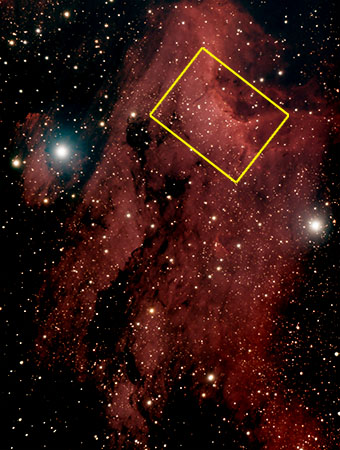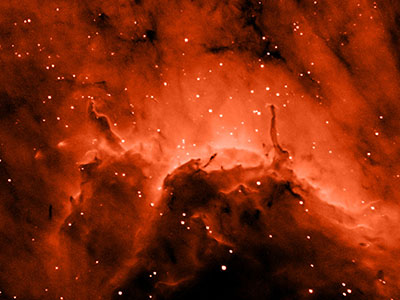

IC 5070 and IC 5067, known as the Pelican Nebula, comprise a region of ionized hydrogen gas about 1800 light years away in the constellation Cygnus. The glowing hydrogen in this emission nebula resembles a pelican, hence its name.

| Exposure |
• 18 hours ☞ Color: 6.4 hours (48 X 8 minutes) @ -10°C (August 2019) ☞ Hα: 11.7 hours (70 X 10 minutes) @ -15°C (August 2022) • Dusk flats • Camera position angle: 257° |
|
Processing |
• With PixInsight: ☞ Calibration and star registeraton ☞ Subframe integration ☞ Histogram transformation ☞ Background noise reduction • Noise reduction and detail recovery in Topaz DeNoise AI • Final tweaking in Photoshop CS6 |
| Date and Location |
• August 29, 2019; August 3 & 12, 2022 • Louisa County, Virginia, USA |
|
Equipment |
• TMB-130SS APO refractor @ f/7 on an A-P 1200 mount • ZWO ASI-1600MC Pro color camera • Guided with a ZWO ASI-120M camera on a 60mm f/5 scope • Imaging and autoguiding with MaxIm DL 6.20 • Automated image acquisition with ACP Observatory Control |
In 2005 I imaged the Pelican with a telescope and camera having a smaller field of view that didn't show the entire head. I was struck by how a small region of the neck resembles an erupting volcano.
I opened the monochrome hydrogen-alpha image in Photoshop, rotated it, cropped it, and colored it reddish-orange. The region is outlined in yellow in the left image below, and the right image shows the resulting "volcano." You can see the full-size image here.

|

|
Updated May 23, 2023